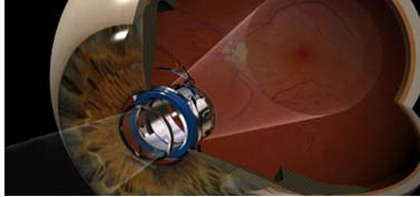
Squinting at a computer screen can cut in half the number of times someone blinks each minute. And that could lead to an irritating condition called dry eye, new research suggests.
The more that the participants in this study squinted their eyes, the less they blinked. And the less they blinked, the more their eyes ached or burned, and the more they reported sensations of dryness, irritation and tearing.
Just a slight amount of squinting reduced blink rates by half, from 15 blinks a minute to 7.5 blinks a minute.
“People tend to squint when they read a book or a computer display, and that squinting makes the blink rate go way down,” said James Sheedy, the study's lead author and a professor of optometry at Ohio State University. “Blinking rewets the eyes. So if your job requires a lot of reading or other visually intense work, you may be blinking far less than normal, which may cause eye strain and dry eye.”
One more occupational hazard for all of us to worry about.
From TechNudge.

























